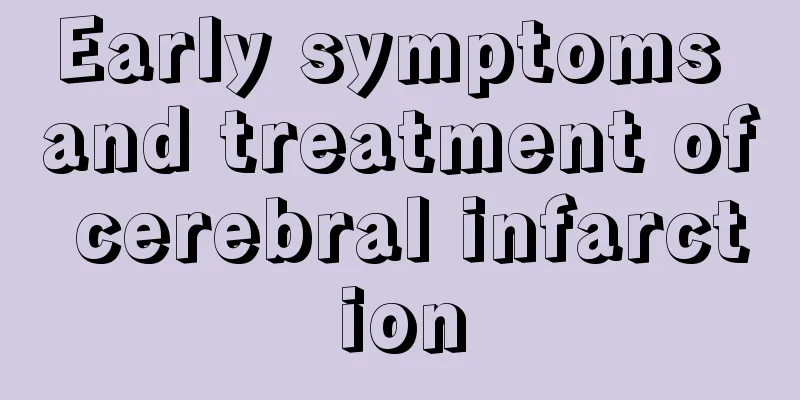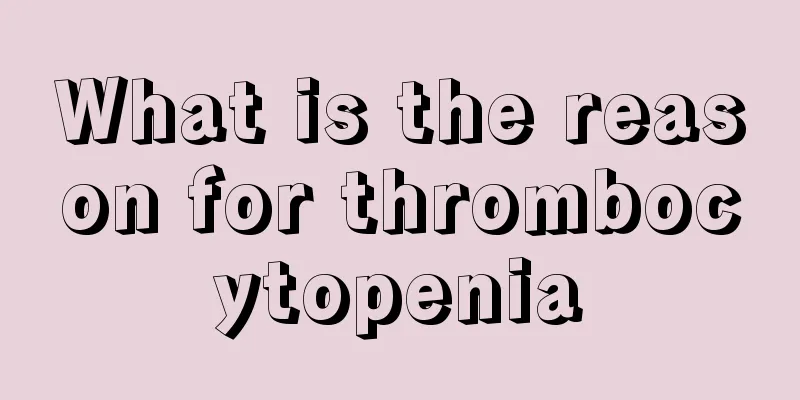Early symptoms and treatment of cerebral infarction

|
The brain is the most important part of the human body because it controls the body's limbs, language, and behavioral abilities, all of which need to be controlled by the brain. If the brain has serious symptoms of disease, it needs to be examined and treated in a timely manner. Cerebral infarction is a common disease, and its symptoms are more common among the elderly. Because the elderly are older, their blood circulation is slower and more prone to blockage. What are the early symptoms and treatments of cerebral infarction? When cerebral infarction occurs, people are often caught off guard. In fact, there are certain symptoms before the onset of cerebral infarction, which are what we call early symptoms. Understanding the early symptoms of cerebral infarction is of great significance for the early prevention and treatment of cerebral infarction Cerebral infarction is a cerebrovascular disease with neurological dysfunction. It is extremely harmful and has seriously affected people's normal lives. Preventing cerebral infarction is the first priority for people What are the early symptoms of cerebral infarction? 1. Blurred vision: manifested as temporary visual impairment or visual field loss, which usually recovers on its own within 1 hour. Coty performed fundus examination and cerebral blood flow measurement on 10 patients with transient visual impairment and found that 3 of them had retinal artery occlusion and 7 had branch retinal artery occlusion. 2. Hemiplegia: also known as transient ischemic attack. Strictly speaking, this is the mildest type of stroke. According to follow-up observations, more than half of the people will suffer ischemic stroke 3 to 5 years after a transient ischemic attack. 3. Continuous yawning: When cerebral arteriosclerosis gradually worsens, the lumen becomes narrower and narrower, cerebral ischemia and hypoxia worsen, especially when the respiratory center is hypoxic, it will cause yawning reflex. Frequent yawning occurs in about 80% of people within 5 to 10 days before an ischemic stroke, and is an important warning sign. 4. Amaurosis fugax: The patient suddenly becomes dark in front of his eyes and cannot see anything. The condition recovers within a few seconds or minutes and is accompanied by nausea, vomiting, dizziness and impaired consciousness. Recently, Norwegian doctor Koti found carotid atherosclerotic lesions in 11 out of 18 patients with amaurosis fugax. |
<<: Symptoms of Raynaud's disease
>>: Early symptoms of female genital warts eczema
Recommend
How to treat breast cyst hyperplasia
Many women are familiar with breast cystic hyperp...
There are 4 early symptoms of colorectal cancer
In fact, there are many complications of colorect...
Is blood sugar of 8.2 normal after a meal? How to deal with it
People with high blood sugar generally suffer fro...
What are the dangers of going to bed without drying your hair?
Many people do not have the habit of blowing thei...
What to do if your eyes are dry and painful
Dry and swollen eyes are very common in daily lif...
What to do if the thermometer can't be shaken off
Thermometers are widely used in daily life. They ...
How to remove black acne marks
Acne marks are also called acne pits, which are t...
What should I do if my daughter has dark skin
It is said that a daughter is a father's litt...
Why do you drool while sleeping? Here are some tips on how to prevent and treat it
We often see that babies drool while sleeping, wh...
I fart over 100 times a day
If a person farts in public and that fart is smel...
Can toothpaste shrink pores?
The main function of toothpaste in our lives is b...
What are the benefits of family travel
Many families have a family trip every year. Ther...
What to do if bitten by a rat
There are four pests in human society: rats, cock...
Nutritional recipes for college entrance examination candidates_Family recipes for college entrance examination nutritious meals
If there is a student in the family who needs to ...
What does liver fibrosis mean? Pay attention to maintenance to effectively avoid it
Liver fibrosis is different from many other liver...









